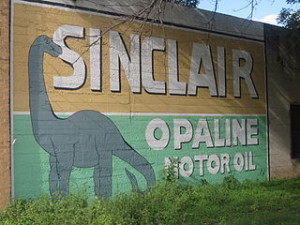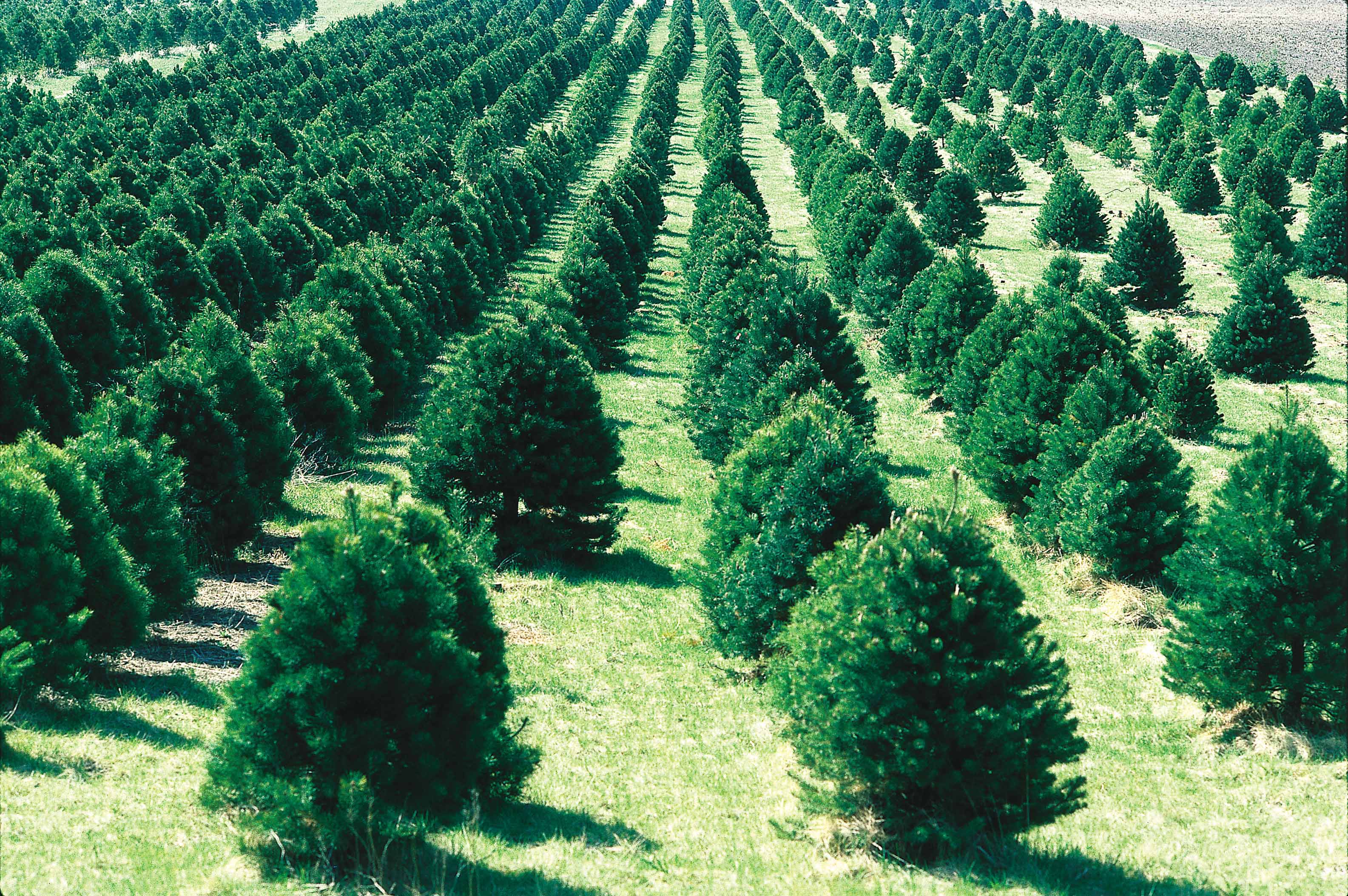We all want to leave a livable planet for future generations. In doing so, there are many priorities to juggle – protecting natural ecosystems, preserving biodiversity, and maintaining the “ecosystem services” that keep our air, water and soil clean. At a basic level, these seemingly unrelated priorities all center on the space we take up on this planet, and how we use it. There are other major environmental problems like poaching, pollution and climate change, to be sure. But this series will focus the global effects of our voracious consumption of Earth’s land and bounty. There are alternatives to many polluting practices, but there really isn’t an alternative to using land. Humans need a place to live, and something to eat. That takes land. Put plainly, we are crowding out the living things around us.
The loss of habitat is one of the most serious threats to biodiversity globally. Every corn field in Iowa is one less tall grass prairie or forest. Same goes for every parking lot and suburban front lawn. Every wetland we drain to build houses degrades the planet’s ability to filter water a little bit more. My point is not to guilt trip you about taking up space on Earth (how dare you!?) But as the human population passes seven billion people, all this space adds up. We need to think, plan and act globally if we want to leave room for forests and wetlands. How do we ensure a decent life free from hunger for this and future generations, including the billions of people who don’t yet have that, while minimizing the damage we do to the other living things with which we share this planet?

There’s only one, so you gotta share
One way to understand this problem is to think of human land use in terms of our share of the global carbon cycle. There is a limited amount of the sun’s energy that is captured every year, and we need to share that (carbon-stored) energy with every other living thing. With planning, we can utilize this cycle in a utilitarian way, to minimize the damage we do to the environment while ensuring a decent life for humans.
This carbon cycle-based approach is a reductive view of our impact on the environment, of course. However, the carbon cycle represents the flow of energy on Earth at its most elemental level (sorry). Looking at environmental issues this way can give us a framework to understand how seemingly unrelated practices like irrigating deserts, family planning, biofuels, vegetarianism, and intercropping all address the same core problem. First, a little bit about the carbon cycle:
The carbon cycle
A wheat plant in a farm field photosynthesizes, turning CO2 into organic carbon like carbohydrates (starch and sugar) and lipids (fats and oils). This process is called carbon “fixation,” and the organic carbon is how the wheat stores the sun’s energy in a way that can be used by carbon-based life like the wheat plant, a mushroom, or you. If you eat a sandwich made with that wheat, then you can go to the gym and “burn” (respire) that organic carbon back into CO2, releasing energy that you can use for your workout. That’s one full cycle: from carbon dioxide in the atmosphere to organic carbon in the plant, and then from organic carbon back to carbon dioxide in you, and exhaled back out into the atmosphere. The sum total of all this photosynthesis and respiration is the global carbon cycle.

The carbon cycle. Image: U.S. Department of Energy Office of Science
There is a limited amount of surface area on Earth for this carbon fixation to take place, and some areas do it more efficiently than others. Grasslands in the grain belt are more productive than arctic tundra – they produce more sugar, starch, and fat out of the CO2 in the air. Paving over an acre of the Sahara desert does a lot less damage than paving over an acre of the Amazon, both in terms of the carbon cycle and biodiversity (the two are related). This is why land itself is not the best measure of what we are taking from the Earth, and carbon cycle is a closer approximation.
Not dinosaur bones
When CO2 is discussed in the context of environmentalism, many people will assume that we’re talking about the greenhouse effect and climate change. While the topics are interrelated, this series is not about climate change, which is mostly the result of introducing CO2 (and other greenhouse gases) that were not previously cycling in the system.

Not talking about dino bones. Photo: Billy Hathorn
Fossil fuels like natural gas, oil, and coal are made of the bodies of organisms from millions of years ago. While the organic carbon stored in these fuels originally came about through the same process of carbon fixation, it is now stored in a form that would not otherwise be re-released into the atmosphere, and so is out of the current global carbon cycle. When we burn these fuels, we reintroduce that carbon back into the cycle as CO2 in the atmosphere. As plants cannot incorporate all this new CO2 into organic carbon, it is building up in the atmosphere, and causing climate change through the greenhouse effect. This is another huge environmental problem, but not the topic of this series. What I am talking about here is our use of the carbon currently cycling through the system, not our introduction of more CO2.
Our slice
The human population size and standards of living determine the amount of energy (food) we need to sustain ourselves. To get this energy, we redirect the organic carbon being fixed on farmland from natural food chains to the human food system by replacing the wild species there with domesticated crops and livestock. As we use land for agriculture (or housing or industry), we degrade or destroy the wildlife habitat that lived there, driving species from that space. This environmental destruction is a necessary part of feeding ourselves.
There are several overlapping ways that we can try to harvest a sustainable share of the global carbon cycle that balances our need for space and energy with the needs of other living things. Through this approaches, we can try to live decent lives while not crowding out the rest of life on Earth.
1) Limit the size of our share. This can happen by slowing population growth through family planning initiatives. Fewer people means fewer resources needed. While this approach is straightforward, there are limits to it, as most of us are not willing to resort to Draconian measures such as sterilization or China’s one-child policy. However, what we can do is reduce the share of the carbon cycle that each person uses, which brings to a related approach:
Increase the efficiency of our use of the carbon cycle. We need a certain amount of land to produce the raw calories and nutrition to feed everybody, but not all agricultural practices are equal – for example, raising cattle requires much more land per calorie than raising soy. Using crop rotation, increasing urban density, planting food parks, and burning second generation biofuels are some tools we can use here.
2) Limit the amount of biodiversity loss in lands under human use. Just because we are using land for agriculture doesn’t mean that there can’t also be some wildlife there. Practices towards this goal include reducing pesticide use in farms, shifting from monoculture farming to diverse crops, allowing a little wildlife on our farms, planting street trees in cities, and using native plants instead of mowed lawns in suburban yards.
3) Distribute the pain. Much of the global food production takes place in a few biomes, such as temperate grasslands – the “grain belts” of North America and Eurasia. If we eat more foods like seaweed and plant more crops in marginal lands like deserts, we can distribute our share more evenly across biomes, taxing the biodiversity in these areas less.
4) Increase the size of the overall global carbon cycle. This includes old practices such as irrigating and fertilizing marginal lands, as well as newer, more sci-fi ideas like genetically engineering plants, building “vertical farms” in cities, and even “geo-engineering” projects like fertilizing the ocean’s algae with iron.
You’ve probably heard of many of these environmental practices, but perhaps have not thought about them from the perspective of our use of the carbon cycle. The idea of managing “our slice of the carbon cycle” can unify various, seemingly unrelated environmental issues and practices under one clarifying, simplifying framework. In upcoming installments, I will explore the advantages and drawbacks of each of these four approaches through a carbon-centric lens. Stay tuned!
References:
Naidoo, Robin, et al. “Global mapping of ecosystem services and conservation priorities.” Proceedings of the National Academy of Sciences 105.28 (2008): 9495-9500. DOI
Zedler, Joy B., and Suzanne Kercher. “Wetland resources: status, trends, ecosystem services, and restorability.” Annu. Rev. Environ. Resour. 30 (2005): 39-74. DOI
Foley, Jonathan A. “Net primary productivity in the terrestrial biosphere: the application of a global model.” Journal of Geophysical Research: Atmospheres (1984–2012) 99.D10 (1994): 20773-20783. DOI
Chase, Jonathan M., and Mathew A. Leibold. “Spatial scale dictates the productivity–biodiversity relationship.” Nature 416.6879 (2002): 427-430. DOI
Fahrig, Lenore. “Effects of habitat fragmentation on biodiversity.” Annual review of ecology, evolution, and systematics (2003): 487-515. link

